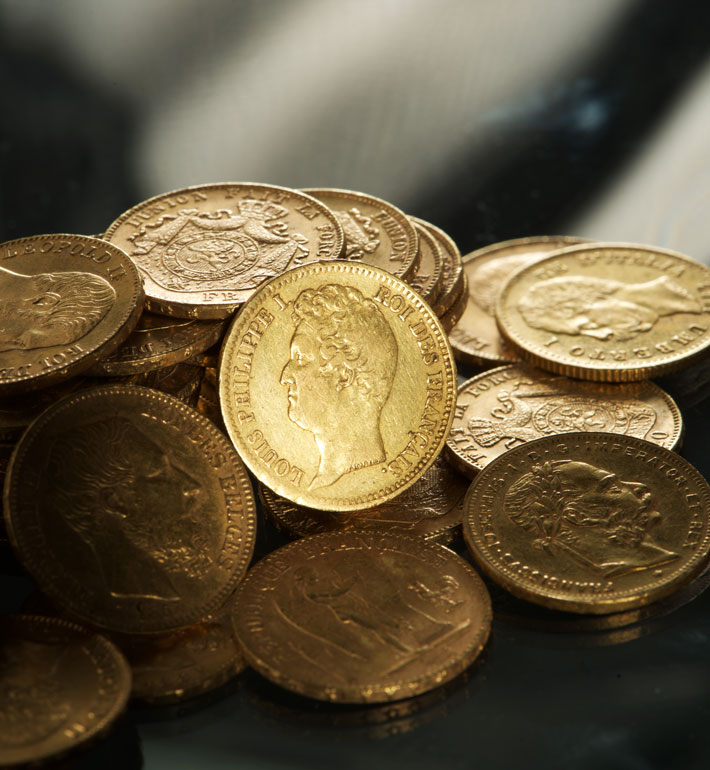A store of gold Nazi coins has been discovered in a northern German town.
The coins are thought to be worth around €45,000 and were found by a local man who does metal detecting and a little archaeology as a hobby.
Florian Bautsch from Lueneburg in Germany, just south of Hamburg, came across a few gold coins when he was searching the edge of a field near his home with a metal detector. When he started to uncover more and more coins he abandoned the excavation and contacted experts to come and assess the stash of coins.
Once fully excavated the store revealed more than 210 coins. The coins originate from various European countries including France, Belgium, Austria and Hungary and are thought to have been made in the mid to late 1800s.
In the same location as the coins, two metal Nazi seals were found with the typical Nazi symbols of the swastika, the eagle and the words ‘Reichsbank Berlin’. When the Third Reich was in power Germany’s central bank was called the Deutsche Reichsbank so the seal would have been referring to this. Metal assessment has shown that the seals were made in the 1940s.
The store of coins were found right under a pine tree which is thought to be about 50 years old, so it would have grown up after the stash was buried. That means the coins must have been buried there towards the end or just after World War Two came to an end.
The Third Reich was well-known for its under-hand ways of gathering and hoarding its wealth, which was formed from cash, gold, silver, art, and antiques. Experts believe that because someone buried the coins that they might have been stolen and they buried them there with the intention of possibly return to get them at a later date.
The local Lueneburg Museum thinks that it might have been a Nazi officer or someone who worked at the bank, because of the large haul of coins they would have had to have had access to the bank’s stored wealth. Alternatively it could have been someone who took an opportunity to steal them when they were being transported, the Reuters reports.
Each coin is around two centimeters across and weighs about six and a half grams each. The coins are still in good condition and no one has come forward to claim then since news that they were found was released.
The museum says that during the 1940s, one of the coins would have easily bought an entire suit for a man, so were and still are very valuable. The coins are to be put on display at Lueneburg Museum.
